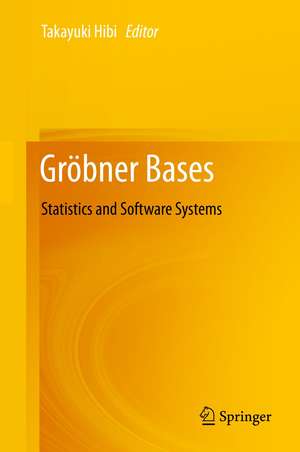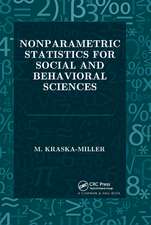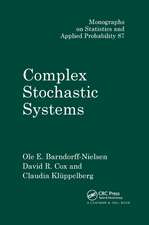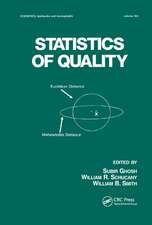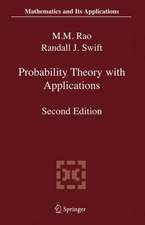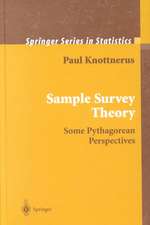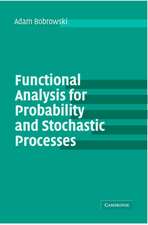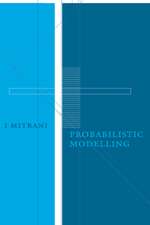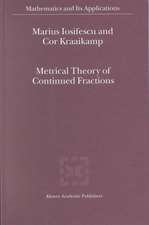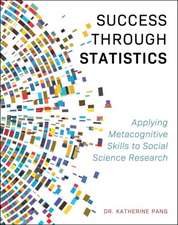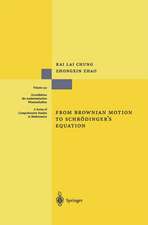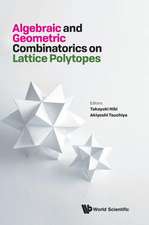Gröbner Bases: Statistics and Software Systems
Editat de Takayuki Hibien Limba Engleză Hardback – 17 ian 2014
This book serves as a standard bible of the Gröbner basis, for which the harmony of theory, application, and computation are indispensable. It provides all the fundamentals for graduate students to learn the ABC’s of the Gröbner basis, requiring no special knowledge to understand those basic points.
Starting from the introductory performance of the Gröbner basis (Chapter 1), a trip around mathematical software follows (Chapter 2). Then comes a deep discussion of how to compute the Gröbner basis (Chapter 3). These three chapters may be regarded as the first act of a mathematical play. The second act opens with topics on algebraic statistics (Chapter 4), a fascinating research area where the Gröbner basis of a toric ideal is a fundamental tool of the Markov chain Monte Carlo method. Moreover, the Gröbner basis of a toric ideal has had a great influence on the study of convex polytopes (Chapter 5). In addition, the Gröbner basis of the ring of differential operators gives effective algorithms on holonomic functions (Chapter 6). The third act (Chapter 7) is a collection of concrete examples and problems for Chapters 4, 5 and 6 emphasizing computation by using various softwaresystems.
| Toate formatele și edițiile | Preț | Express |
|---|---|---|
| Paperback (1) | 399.29 lei 6-8 săpt. | |
| Springer – 27 aug 2016 | 399.29 lei 6-8 săpt. | |
| Hardback (1) | 407.01 lei 6-8 săpt. | |
| Springer – 17 ian 2014 | 407.01 lei 6-8 săpt. |
Preț: 407.01 lei
Nou
Puncte Express: 611
Preț estimativ în valută:
77.89€ • 80.86$ • 64.95£
77.89€ • 80.86$ • 64.95£
Carte tipărită la comandă
Livrare economică 22 martie-05 aprilie
Preluare comenzi: 021 569.72.76
Specificații
ISBN-13: 9784431545736
ISBN-10: 4431545735
Pagini: 470
Ilustrații: XV, 474 p. 123 illus.
Dimensiuni: 155 x 235 x 32 mm
Greutate: 0.86 kg
Ediția:2013
Editura: Springer
Colecția Springer
Locul publicării:Tokyo, Japan
ISBN-10: 4431545735
Pagini: 470
Ilustrații: XV, 474 p. 123 illus.
Dimensiuni: 155 x 235 x 32 mm
Greutate: 0.86 kg
Ediția:2013
Editura: Springer
Colecția Springer
Locul publicării:Tokyo, Japan
Public țintă
ResearchCuprins
A Quick Introduction to Gröbner Bases.- Warm-up Drills and Tips for Mathematical Software.- Computation of Gröbner Bases.- Markov Bases and Designed Experiments.- Convex Polytopes and Gröbner Bases.- Gröbner Basis for Rings of Differential Operators and Applications.- Examples and Exercises.
Textul de pe ultima copertă
The idea of the Gröbner basis first appeared in a 1927 paper by F. S. Macaulay, who succeeded in creating a combinatorial characterization of the Hilbert functions of homogeneous ideals of the polynomial ring. Later, the modern definition of the Gröbner basis was independently introduced by Heisuke Hironaka in 1964 and Bruno Buchberger in 1965. However, after the discovery of the notion of the Gröbner basis by Hironaka and Buchberger, it was not actively pursued for 20 years. A breakthrough was made in the mid-1980s by David Bayer and Michael Stillman, who created the Macaulay computer algebra system with the help of the Gröbner basis. Since then, rapid development on the Gröbner basis has been achieved by many researchers, including Bernd Sturmfels.
This book serves as a standard bible of the Gröbner basis, for which the harmony of theory, application, and computation are indispensable. It provides all the fundamentals for graduate students to learn the ABC’s of the Gröbner basis, requiring no special knowledge to understand those basic points.
Starting from the introductory performance of the Gröbner basis (Chapter 1), a trip around mathematical software follows (Chapter 2). Then comes a deep discussion of how to compute the Gröbner basis (Chapter 3). These three chapters may be regarded as the first act of a mathematical play. The second act opens with topics on algebraic statistics (Chapter 4), a fascinating research area where the Gröbner basis of a toric ideal is a fundamental tool of the Markov chain Monte Carlo method. Moreover, the Gröbner basis of a toric ideal has had a great influence on the study of convex polytopes (Chapter 5). In addition, the Gröbner basis of the ring of differential operators gives effective algorithms on holonomic functions (Chapter 6). The third act (Chapter 7) is a collection of concrete examples and problems for Chapters 4, 5 and 6 emphasizing computation by using various softwaresystems.
This book serves as a standard bible of the Gröbner basis, for which the harmony of theory, application, and computation are indispensable. It provides all the fundamentals for graduate students to learn the ABC’s of the Gröbner basis, requiring no special knowledge to understand those basic points.
Starting from the introductory performance of the Gröbner basis (Chapter 1), a trip around mathematical software follows (Chapter 2). Then comes a deep discussion of how to compute the Gröbner basis (Chapter 3). These three chapters may be regarded as the first act of a mathematical play. The second act opens with topics on algebraic statistics (Chapter 4), a fascinating research area where the Gröbner basis of a toric ideal is a fundamental tool of the Markov chain Monte Carlo method. Moreover, the Gröbner basis of a toric ideal has had a great influence on the study of convex polytopes (Chapter 5). In addition, the Gröbner basis of the ring of differential operators gives effective algorithms on holonomic functions (Chapter 6). The third act (Chapter 7) is a collection of concrete examples and problems for Chapters 4, 5 and 6 emphasizing computation by using various softwaresystems.
Caracteristici
Covers broad aspects of Gröbner bases, including convex polytopes, algebraic statistics, and ring of differential operators Discusses theoretical, practical, and computational aspects of Gröbner bases, providing information on how to use various software packages Is readily accessible to graduate students, requiring no special knowledge to be understood Includes supplementary material: sn.pub/extras
